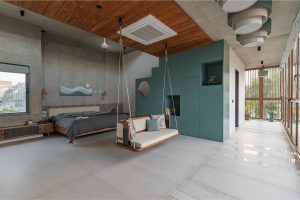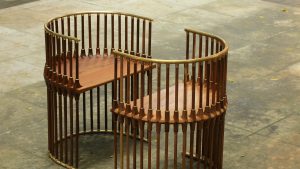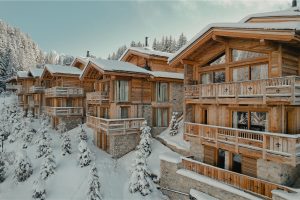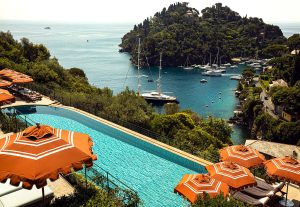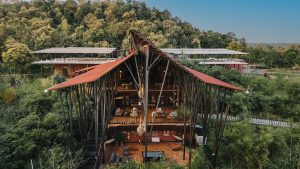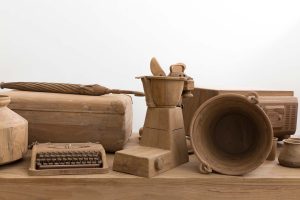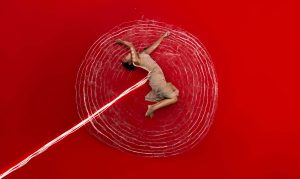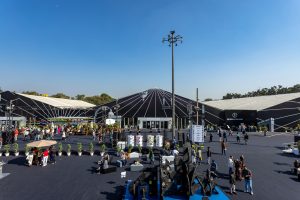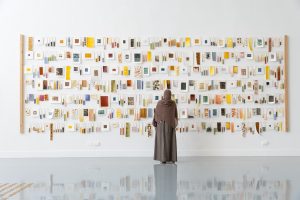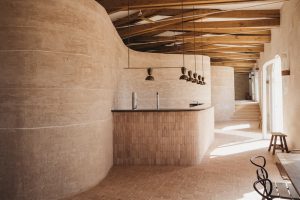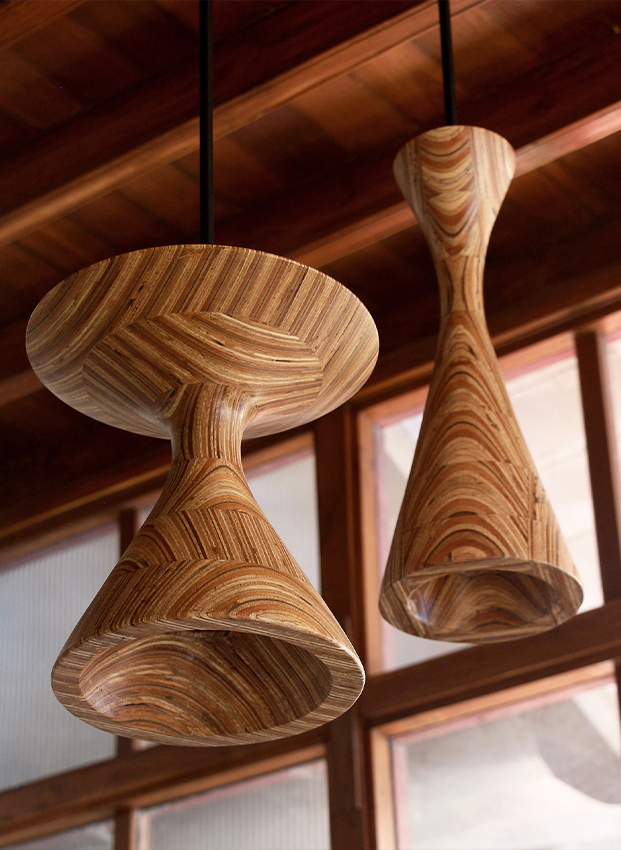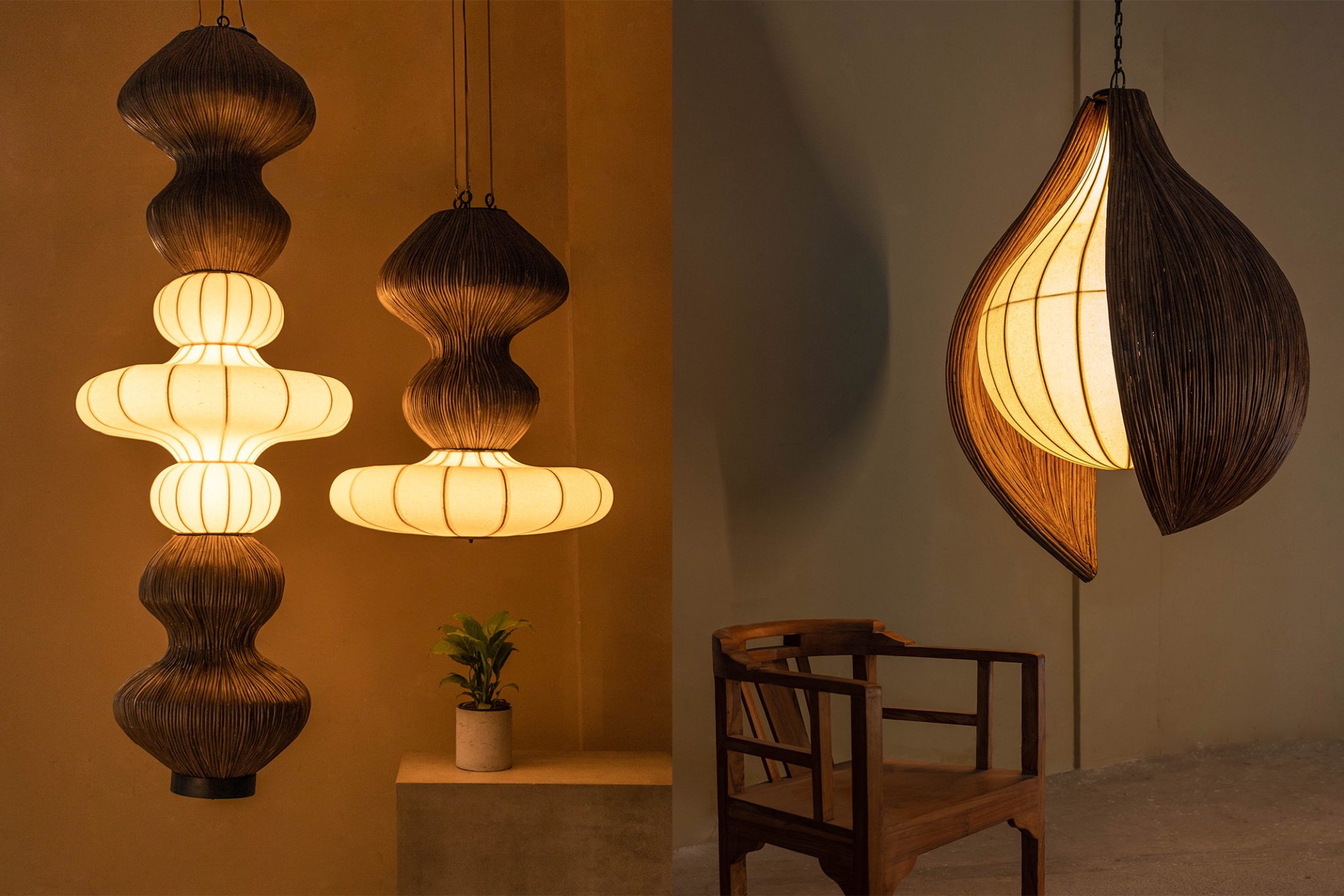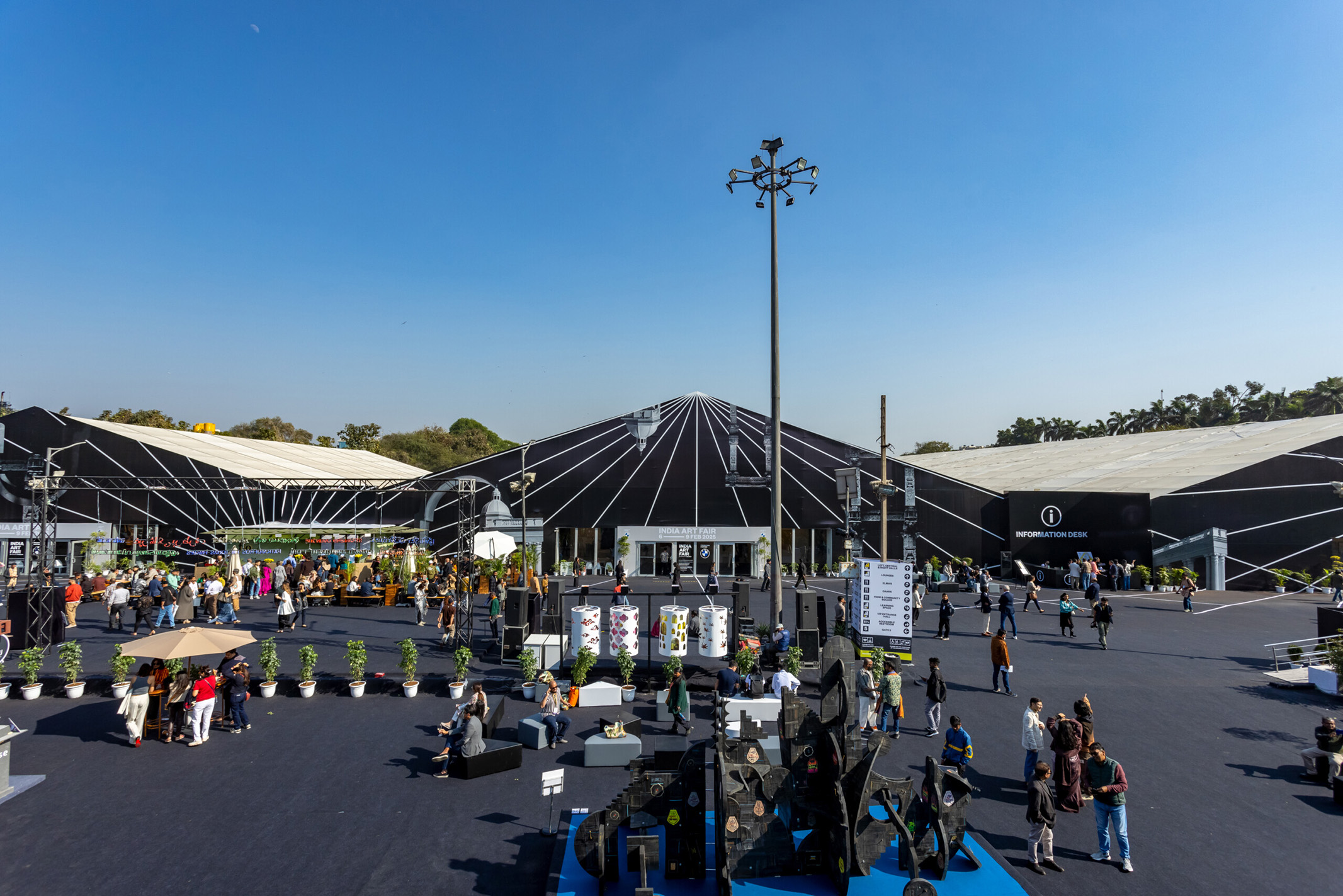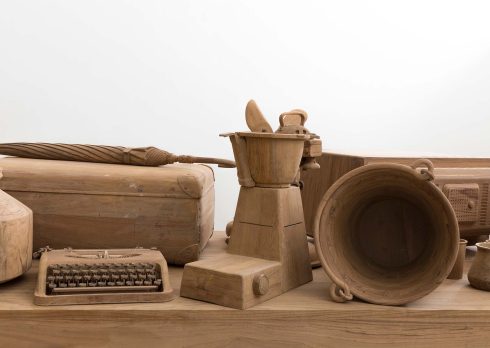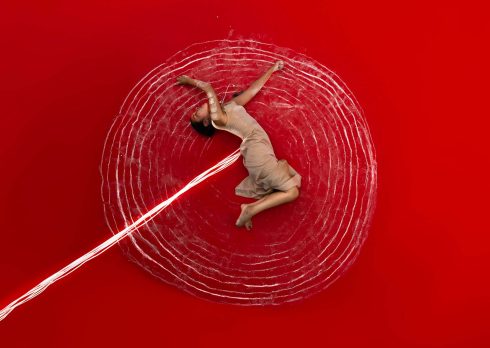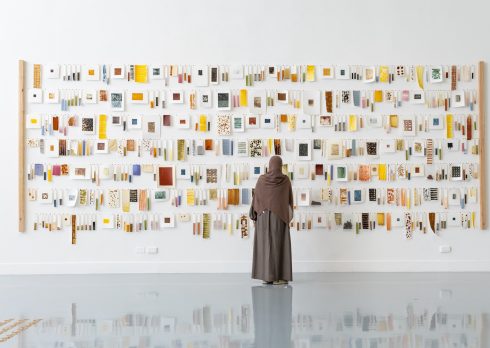5 Trailblazing Artists From India Art Fair 2025
From reshaping narratives in architecture to addressing caste discrimination through dialogue, these artists are leading the way at IAF through powerful reflections, arresting visuals and cutting-edge mediums.
The 16th edition of the India Art Fair leaves art connoisseurs in a state of awe, for a seasoned art collector, a first-time buyer or an art appreciator just visiting the fair, the curation pushes the boundaries of contemporary art. Entering its 16th edition, the IAF presents a record of 120 exhibitors including 26 debutants and 11 design studios. Amidst all things art, design and aesthetics – the fair promises to bring the best art in South Asia to the forefront. This year’s edition has witnessed a shift towards innovative mediums be it tech extending for Subodh Gupta’s classic vessel installations at Nature Morte or the Biloume interactive digital installation at the BMW Art Car.
“One of the big trends we’re seeing is the blending of tradition and technology. It’s fascinating how artists and designers are finding new ways to combine age-old craftsmanship with cutting-edge techniques,” according to says Fair Director, Jaya Asokan. Audiences are more receptive towards mixed media and textural art that truly strikes a bold statement rather than just conventional 2D oils on canvas. DP spotlights five emerging artist practices whose innovative and bold artistic explorations may truly leave you enthralled.
Also read: ‘People Are Bored Of Classics’ Says Fabian Freytag Ambiente Designer Of The Year 2025
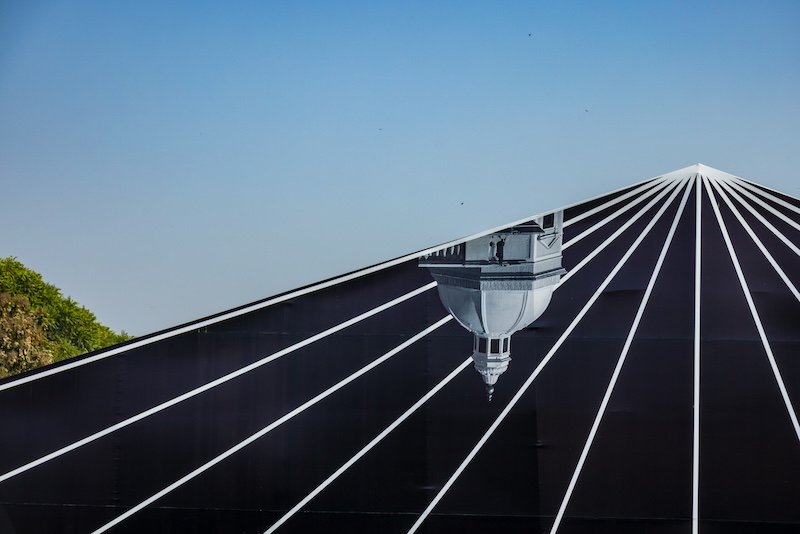
1. ‘Skewed Histories and Site Lines’ by Ayesha Singh – IAF Façade
The sixth artist to be commissioned for the IAF tent, Delhi-based Ayesha Singh, extends her ongoing research on women’s contribution to Indian architecture, in the form of patronage as early as 1000 AD to women architects during the modernist era. The 2025 India Art Fair Facade brings together two series by Ayesha Singh, ‘Skewed Histories and Site Lines,’ this monochromatic magnificence highlights the significant gaps in recording women’s contributions towards architecture. “The lAF Facade breaks with this convention to make visible the stories that are obscured by rigid notions of perspective. We have to reiterate the existence of multiple truths over and over until our history is written differently,” shares Singh.
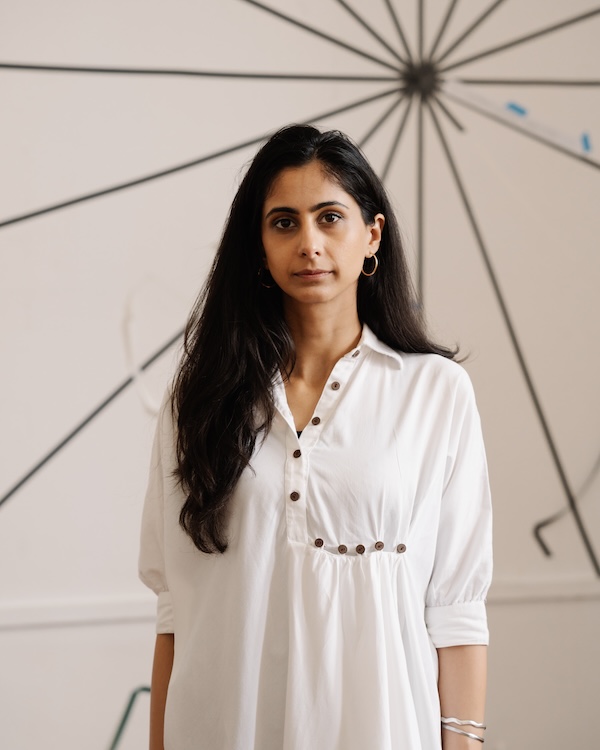
Supported by MASH India, her composition pays homage to women who as architects and patrons contributed to Indian architecture such as Empress Bana Begum, first wife to the 16th Mughal emperor Humayun, who supervised the construction of Humayun’s Tomb; Urmila Eulie Chowdhury – one of the only two women to have worked in Le Corbusier’s team, as well as, Revathi Kamat – the pioneer behind mud architecture, to name a few. Post the fair, the tent will be repurposed to create waterproof relief structures in collaboration with Goonj. As part of the installation, Singh has created an informative timeline and details on the pioneers referenced in the piece that are available to patrons of the fair in multiple languages.
On 8 Feb, 2025 along with visual artist Jyothidas K.V., the artist will respond to the piece by hosting a participatory performance picnic.
Also read: An Insight Into Ayesha Singh’s Artistic Practice Through Her Latest Show – Within Contradiction
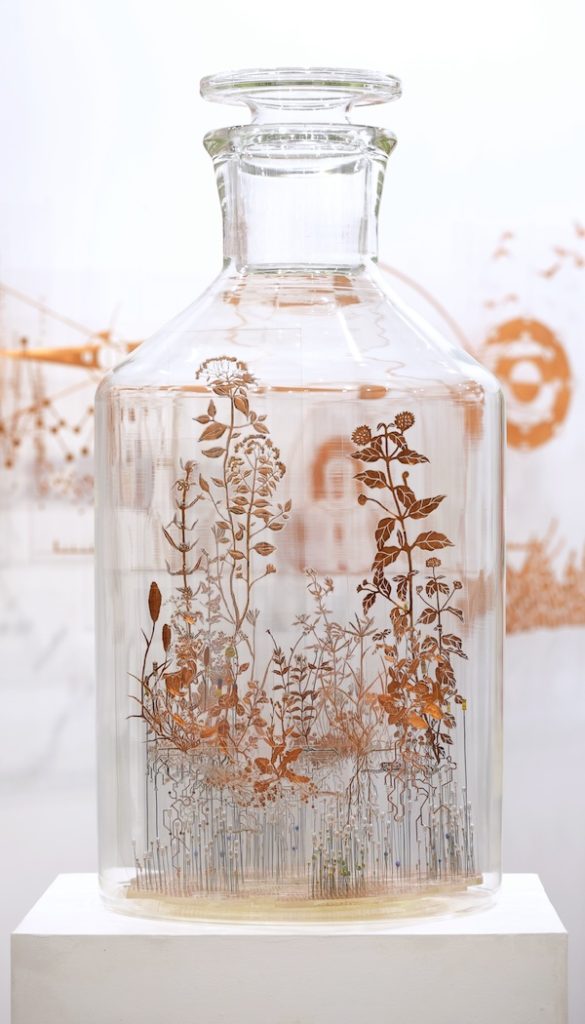
2. ‘The Unwanted Ecology’ by Nandita Kumar – Shrine Empire #B09
Art, tech, and ecology come together in India and New Zealand-based artist Nandita Kumar’s installation at the Shrine Empire booth. Her installation ‘The Unwanted Ecology’ exemplifies Kumar’s long-term interest in the crossroads of industrial and natural worlds. At a distance what looks like a glass flask storing dried plants, is a solar-powered installation that emits sounds with buzzing and humming that are tuned to multiple rhythms.
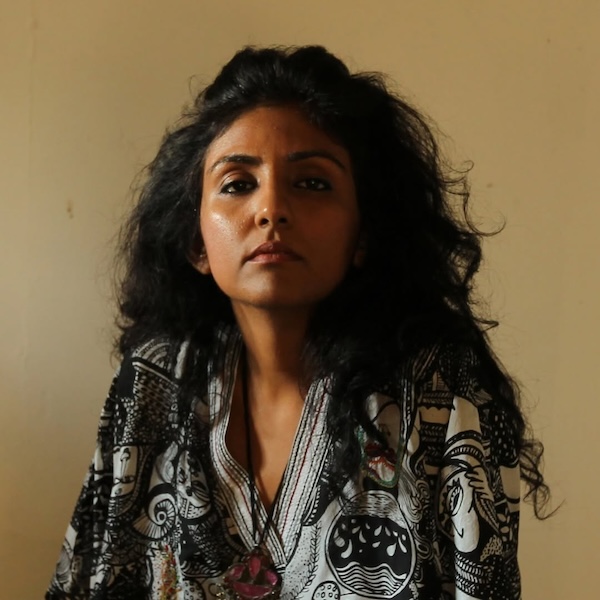
Kumar gives a new lease on life to the plants as they respond to air humidity and the presence of humans around them, replicating living plants both in appearance and life force. Encased in a glass jar there are shapes and vibrations of over twenty archived weeds in an interactive biosphere, collected by the artist from a 20-minute walking radius from her studio in North Goa. This interactive sculpture re-enacts the missed encounters between plants and people.
Also read: Everything You Need To Know About The Freshly Reopened Palazzo Citterio In Milan
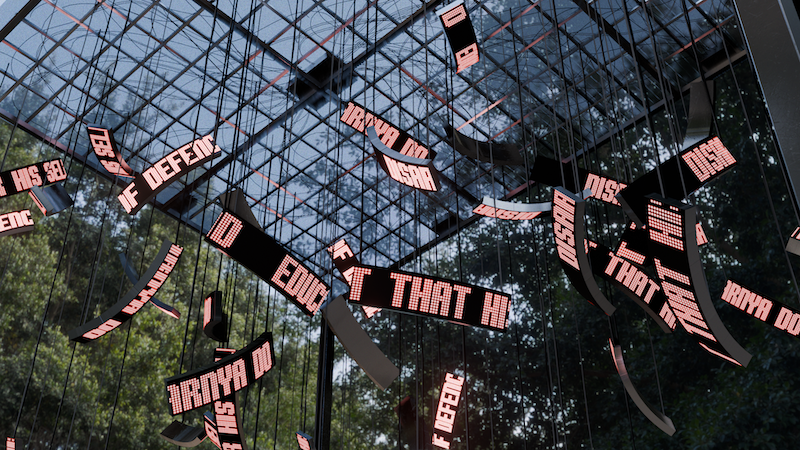
3. ‘I am not your Dalit’ by Yogesh Barve – Outdoor Installation #P09
Mumbai-based Yogesh Barve’s installation titled ‘I am not your Dalit’ addresses caste discrimination in India through a powerful dialogue on social justice and equality. Drawing from James Baldwin’s ‘I Am Not Your Negro,’ the work uses Ambedkar’s writings to confront ongoing social issues, urging viewers to engage with the urgency of change. “If you read all the historical texts from the installation, it would take a person about 1800 hours. This is the volume of ideas on law and human rights that are available but not referred to or accessed by the general public,” shares the artist.
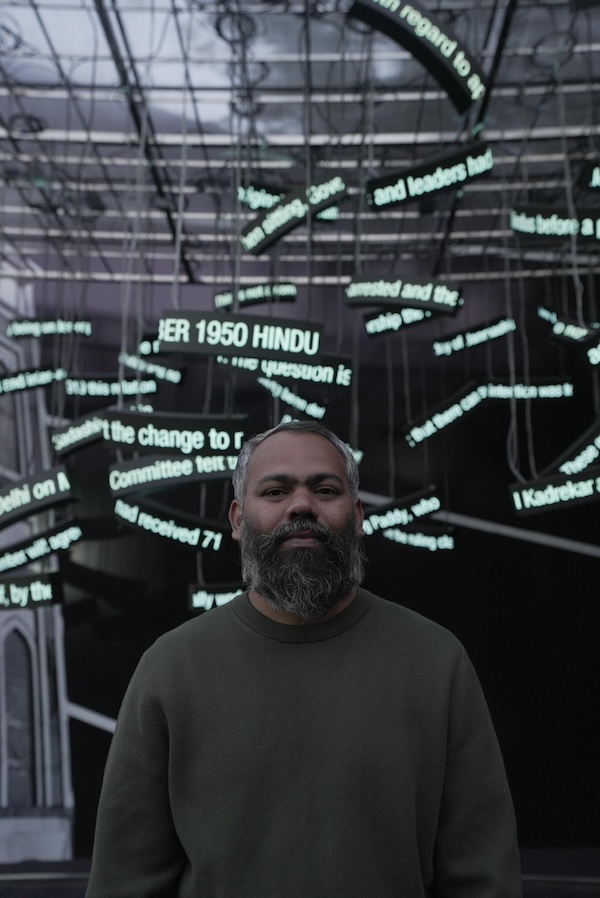
The suspended LED tickers, with text in Hindi and English – a common feature in public spaces like railway stations and markets – serve as a medium to disseminate Ambedkar’s profound ideas on law, human rights, and social justice. Conceptualised and created over 9 months, the work functions as both a critique and a call to action. “I want to bring back awareness to these writings. This is the only way to continue the discussion on providing equal opportunities to the Dalit and marginalised communities,” adds artist Barve. Supported by Art & Charlie, Barve’s installation invites us to reconsider the continued relevance of Ambedkar’s vision for a just society.
Also read: Jenny Holzer’s Show At Guggenheim Revisits The Longest LED Sign From 1989
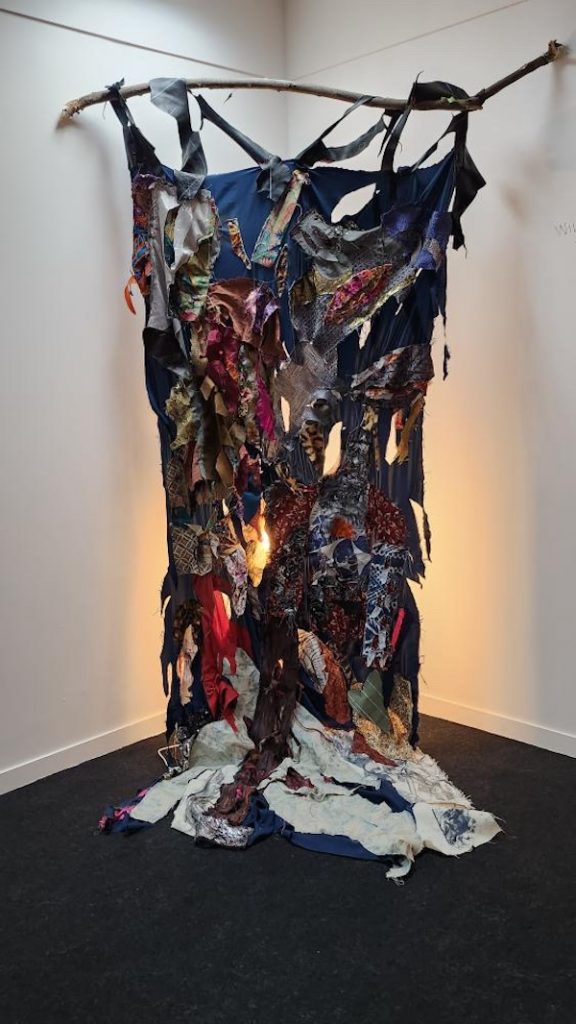
4. ‘Wild Thoughts’ by Imon Phukan – Artist in Residence Programme #M01
Textile art as a medium has come of age and is certainly the highlight of this year’s fair. Rooted in her rich Assamese traditions, now London-based Imon Phukan weaves a larger-than-life tapestry that reflects on ideas of nature, money and memory. She is a multi-disciplinary artist, her artworks range from paintings to sculptures to installations. Her process involves digging and searching continuously, bringing her experiences of migration and movement from one place to another.
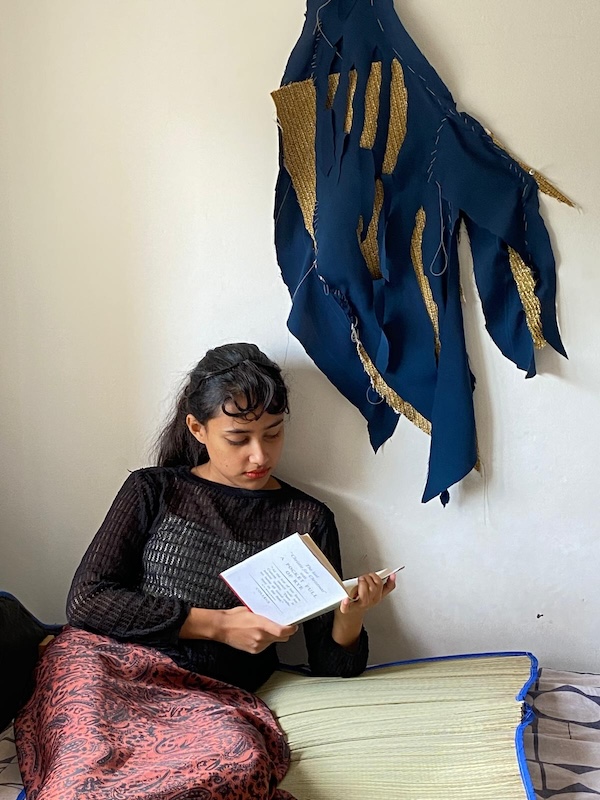
She reflects, “Creativity doesn’t happen only inside an enclosed studio space. It’s in the rituals and accidents.” For IAF 2025’s Artists in Residence programme, Phukan presents a brand-new hand-stitched textile installation in partnership with the Royal College of Art. Titled ‘The forest that I return to,’ the installation weaves together the personal and the universal, offering reflections on the shared human experience of loss, resilience and interconnectedness.
Also read: From Dharavi To Design Miami: Sudheer Rajbhar’s Flap Chair Honours Leather Artisans
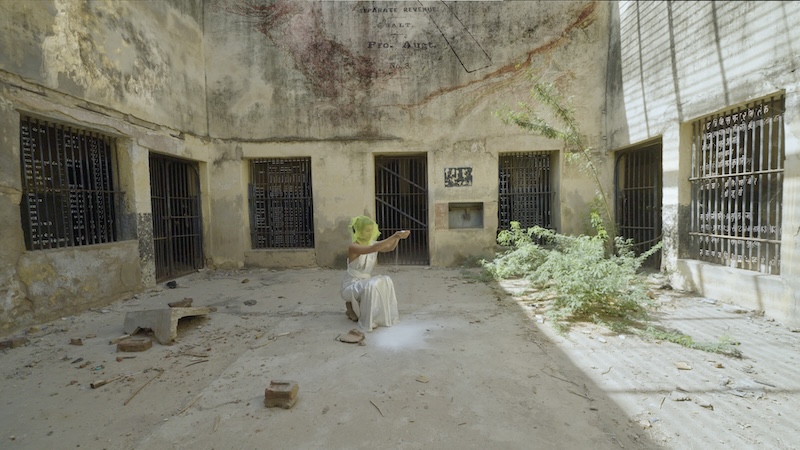
5. ‘The Hedge of Halomancy’ by Hylozoic/Desires: Himali Singh Soin & David Soin Tappeser – Auditorium & NSIC Grounds
Hylozoic/Desires is a multi-media poet-musician duo, whose work centres around the rhythms of love and the beat of belonging. H/D’s methodology involves specific research tendencies into place and history, to develop new speculative futures utilising the musical tradition of jazz and the literary tradition of poetry. For IAF, they explore the various facets of salt through a combined presentation of performance, archival records, and music.
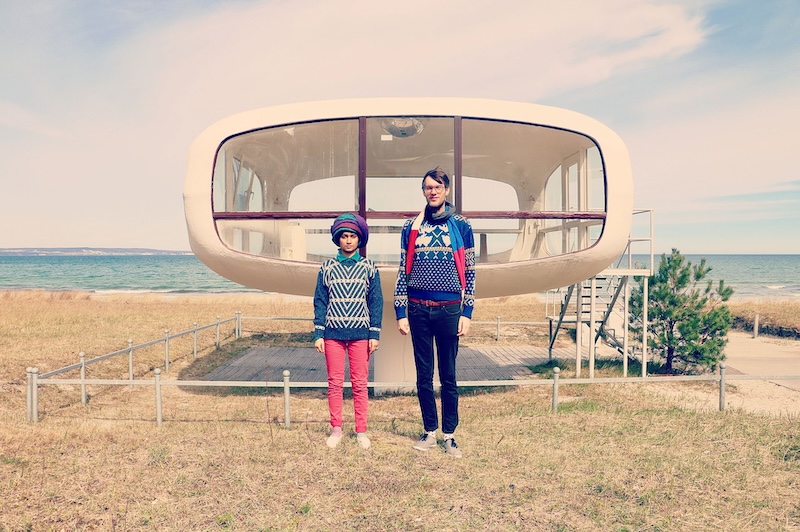
This is an unmissable video work which explores the ‘Great Hedge of India,’ a long barrier of thorny plants maintained by the British Inland Customs Office in the 19th century to prevent the free movement of salt across the country and to enforce a deadly salt tax. The Hedge of Halomancy will be premier at IAF with synchronous video installations at the Sharjah Biennial, and Tate Britain with screenings at the India Art Fair. An outdoor installation will occupy the courtyard of Somerset House.
There will be three shows on 6 Feb, 8 Feb and 9 Feb. The timings can be found on the IAF website.
With innovative mediums and sensorial experiences, these emerging artistic practices are shaping the future of South Asian art. Their cutting-edge art, bold visual language and introspective concepts introduce new layered dialogues with art, self and the community.
The India Art Fair will be on view from February 6 – 9 at NSIC Grounds, New Delhi.




